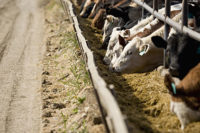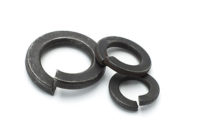Behind food-safety battle lines


|
FSIS has indicated their intent, starting next spring, to regulate non-O157 STEC serotypes O26, O45, O103, O111, O121, and O145 as adulterants in certain raw beef products the same as it does for O157:H7. USMARC scientists anticipated this years ago and have been conducting studies for 10 years to help the beef industry deal with these additional E. coli. serotypes.
The first question they addressed was the level of prevalence of any non-O157 STEC serotype. Their prevalence data (a cultured isolate, not just PCR data) indicate that about 19% of feces samples from fed cattle, 56% of hide samples, 58% of carcass samples before interventions, and about 9% of final carcass samples after interventions were positive for a non-O157 STEC. The USMARC scientists also have data indicating that approximately 6% of samples of beef trim destined for grinding were positive for a non-O157 STEC. Similarly, about 7% of samples of U.S. ground beef from all across the country were positive for a non-O157 STEC. But a very small number of the STEC that have been detected in beef have been isolates with the combination of virulence factors to make them likely to cause human disease and an even smaller number have been of the top 6 STEC serotypes. Nonetheless some of these serotypes are capable of causing the same disease as O157:H7.
Another important question is, how well do currently used post-harvest antimicrobial interventions against E. coli O157:H7 work against the non-O157 STECs? The USMARC team recently completed work that shows that hot water, lactic acid, acidified sodium chlorite (Sanova™), peroxyacetic acid (Inspexx™), bromine compounds (BoviBrome™, HB2™), and a combination of hydrochloric, citric, and phosphoric acids (FreshFX™) each worked as well against the top 6 non-O157 STECs as they do against E. coli O157:H7.
That’s not to say that these interventions all work equally well against such pathogens, but from current data, it appears that if an intervention works against O157:H7, it’ll work at least as well against the non-O157 STECs.
Lastly is the issue of testing for these top six non-O157 STECs. Numerous commercial testing companies are racing to develop tests that will enable industry to accurately, quickly and affordably identify whether their products contain any of the top 6 non-O157 STECs. To assist industry with testing, USMARC researchers are trying to find useful genetic markers that can be used to identify the top 6 STECs in a rapid test. In addition, these scientists are conducting head-to-head comparisons of currently or soon-to-be available commercial tests so meat processors can make informed decisions once FSIS begins testing for these additional E. coli serotypes.
Looking for a reprint of this article?
From high-res PDFs to custom plaques, order your copy today!







